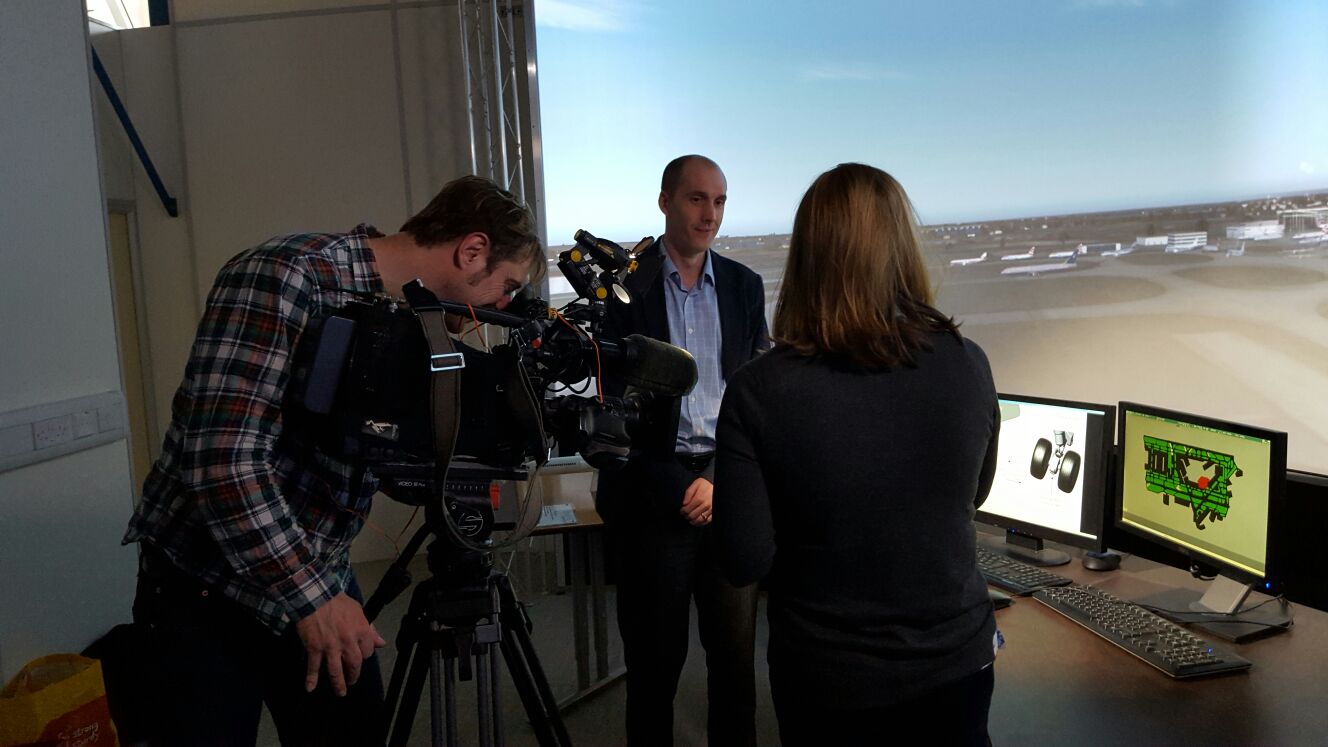Reducing aircraft emissions: is easyJet’s hybrid plane the answer?
02/02/2016

As part of the strategy of reducing its carbon footprint, easyJet, Europe’s leading airline, has unveiled plans for a revolutionary zero-emissions hydrogen fuel system for its aircraft which could save around 50,000 tonnes of fuel (and the associated CO2 emissions) every year. The airline has taken inspiration from some of our students here at Cranfield University, who were asked to develop ideas for what air travel might look like in twenty years’ time, as part of a competition to celebrate easyJet’s 20th birthday in last year.
Reducing emissions before take off
There are benefits to be gained from using electrically powered motors mounted on the main landing gear wheels for taxiing. There are several positive effects resulting from taxiing the aircraft in this way, instead of by the conventional method of running the main engines to produce thrust. These benefits include reduced noise, fuel-burn and CO2 emissions at the airport. This so-called Green Taxi System (GTS) is widely proposed to be powered by up-rating the aircraft’s existing Auxiliary Power Unit (APU) gas turbine.
However, this kind of GTS adds mass to the aircraft systems, and causes increased fuel burn in flight. Cranfield design studies have suggested that for a short haul aircraft (which spends a relatively high amount of the total mission taxiing), the fuel saving on the ground out-weights the extra fuel-burn in flight. Hence, a net fuel saving is possible and this warrants further investigation.
The next step would be to have a taxi system without any harmful emissions. Here, we could replace the APU with a fuel-cell, fed with hydrogen and oxygen to produce clean electricity, silently. Previous industry solutions have suggested that the APU could be replaced by a fuel cell, requiring major changes to the aircraft. This looks like a promising solution for the next generation of airliners, perhaps in the 2035 timeframe.
easyJet have proposed that rather than replacing the APU, an intermediate step can be taken by installing a fuel cell in a container in the cargo hold, to provide power when the aircraft is on the ground. This means that a zero emissions taxi system could be demonstrated in a much shorter timeframe. Low cost carriers like easyJet presently operate with relatively empty holds due to the preference for carry-on baggage over hold luggage. easyJet have today announced their commitment to taking this proposal forward, and I’m really looking forward to the prospect of collaborating on the project with the company and other potential partners.
Read more about the project at http://www.cranfield.ac.uk/About/Media-Centre/news-archive/news-2016/easyJet-reveals-concept-designs-for-hybrid-plane
Categories & Tags:
Leave a comment on this post:
You might also like…
Automotive Engineering: From student to hypercar innovation at Rimac
We sat down with recent graduate Thomas Perrin, to discuss how his year on the MSc in Automotive Engineering at Cranfield University propelled him from the lecture hall directly into the ...
What this year at Cranfield really meant to me
Every Cranfield journey is unique. In this alumni reflection, Zachea Scicluna shares what her year at Cranfield truly meant, from facing uncertainty to gaining hands-on experience in industry-backed projects. I’ve been reflecting (and delaying) ...
Preparing for assignments and exams?
Sorry! We know it seems a bit mean to mention the exams in January rather than looking forward to the break before it! However, we know many of you will be thinking about your forthcoming ...
Screening for FTSE 100 companies on Bloomberg
So you’re researching an index and need some data on its constituent companies? Bloomberg’s Equity Screening tool makes light work of this, not just for the FTSE, but for indices, exchanges and sectors worldwide. Type EQS ...
Accelerating my future: How Cranfield put me on the fast track to automotive safety innovation
Hello! I’m Michaela Kaiser, and I’m thrilled to share my journey studying abroad. I’m from Calgary, Canada, and I recently graduated from Cranfield’s MSc Automotive Engineering course. My path to Cranfield ...
From Myanmar to Cranfield: My path to Renewable Energy
As someone who is passionate about sustainability, my career goal is to build a path in the renewable energy sector. My aspirations comes from the benefits of developing sustainable energy sources and ensuring energy ...






